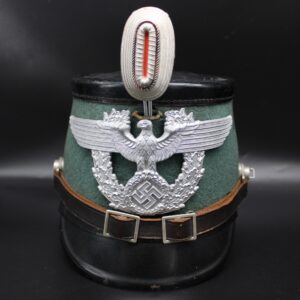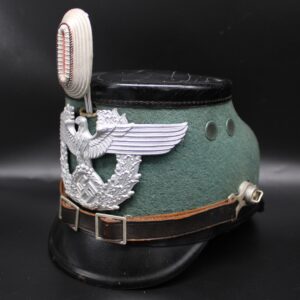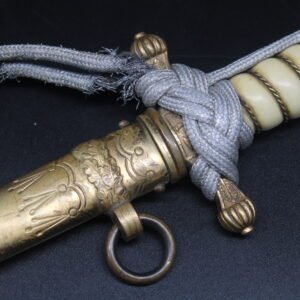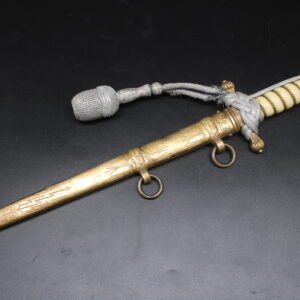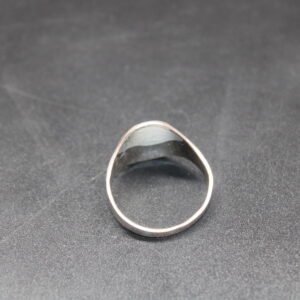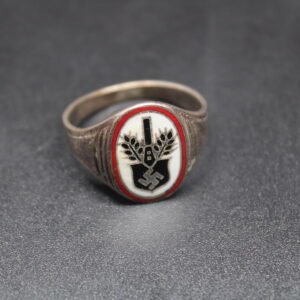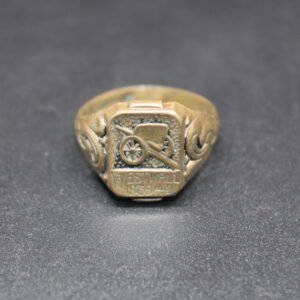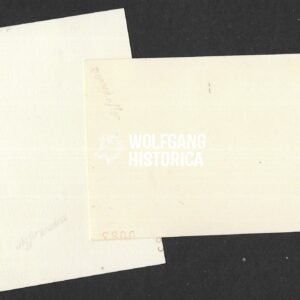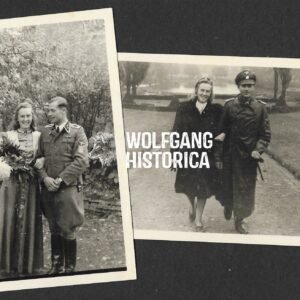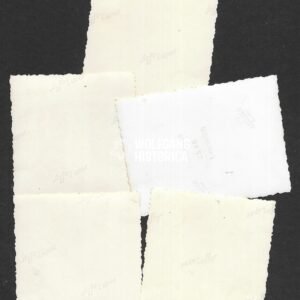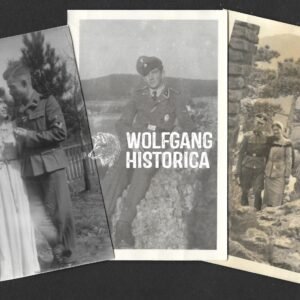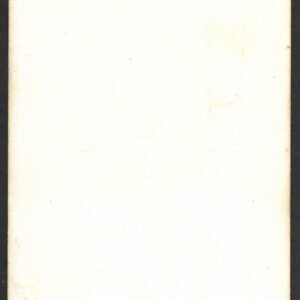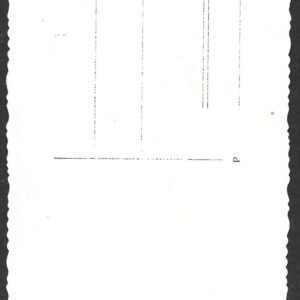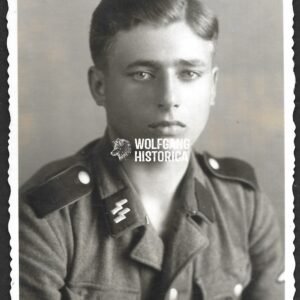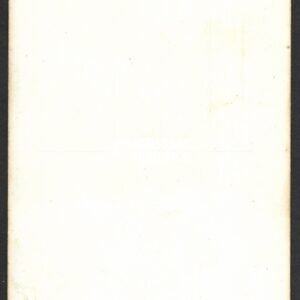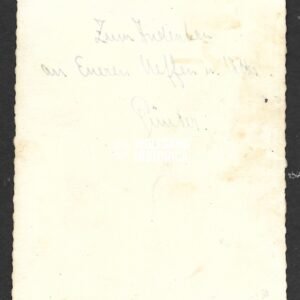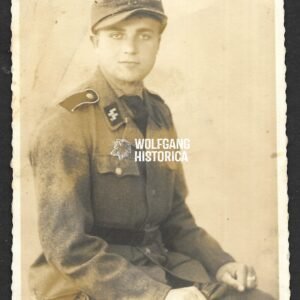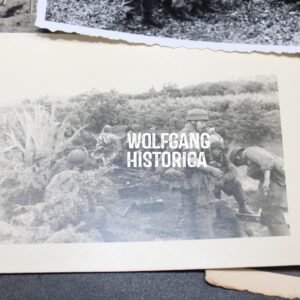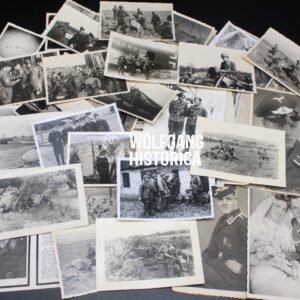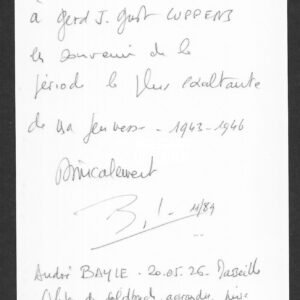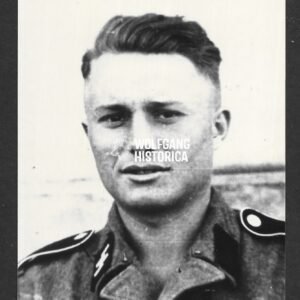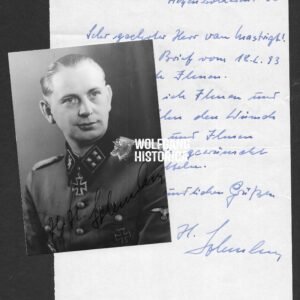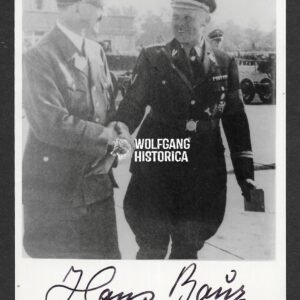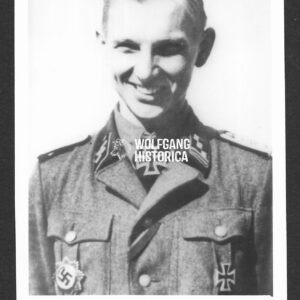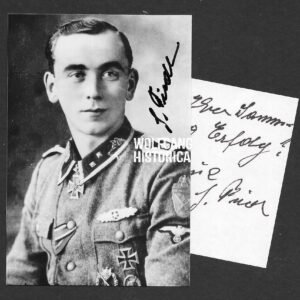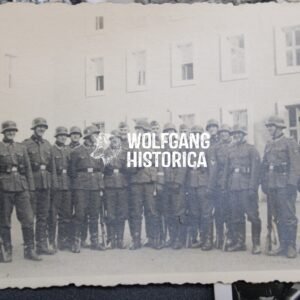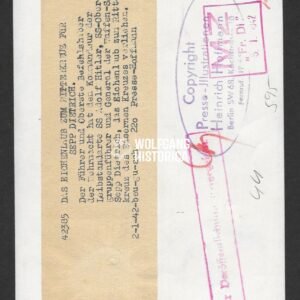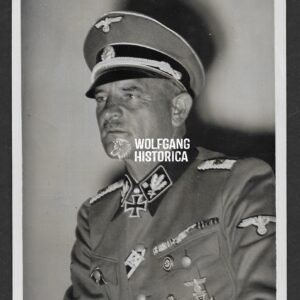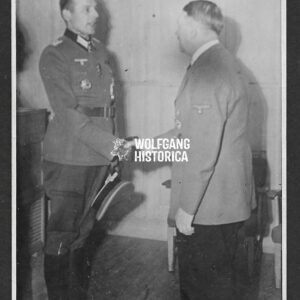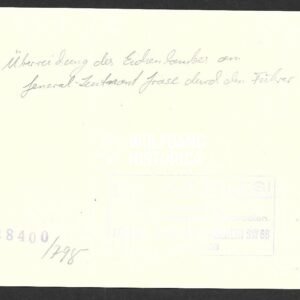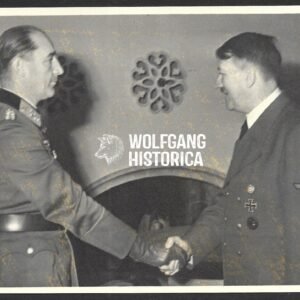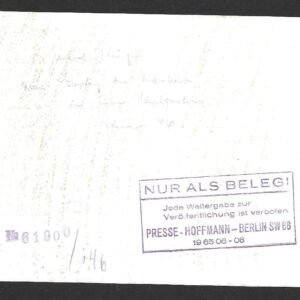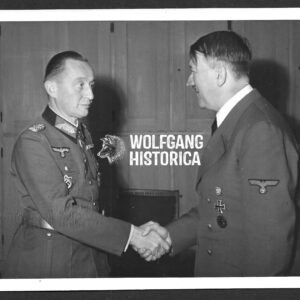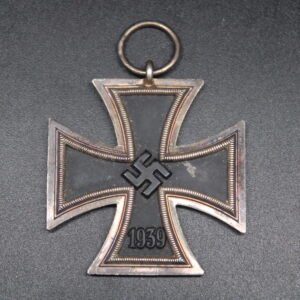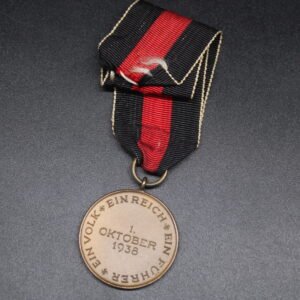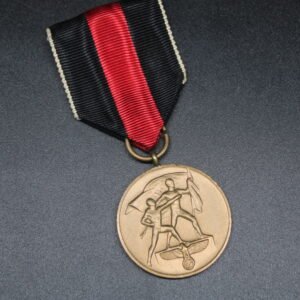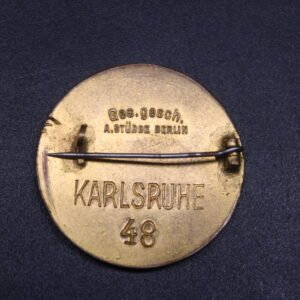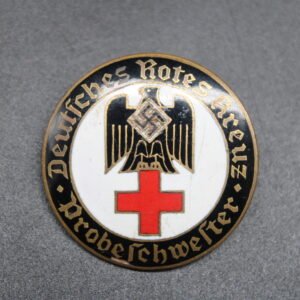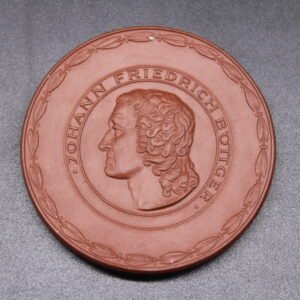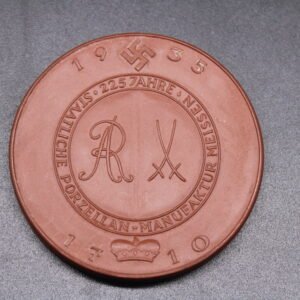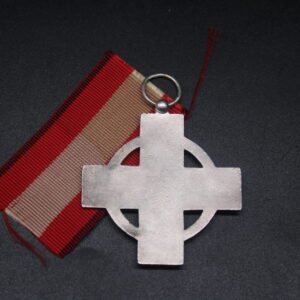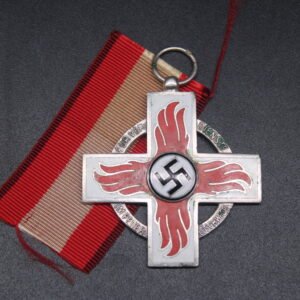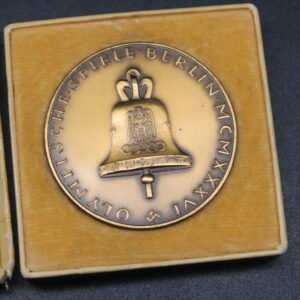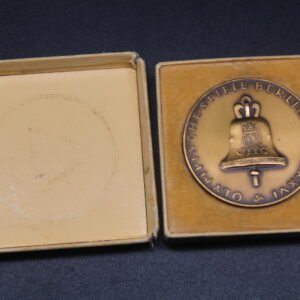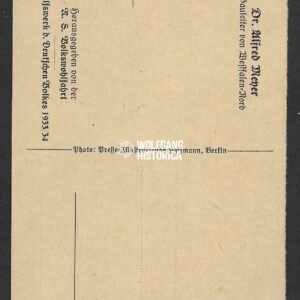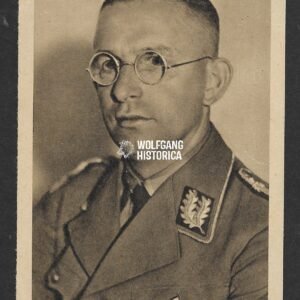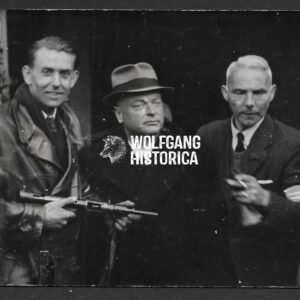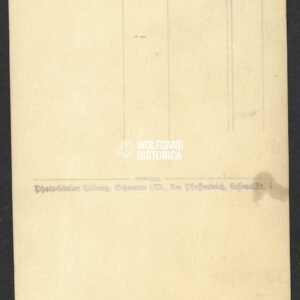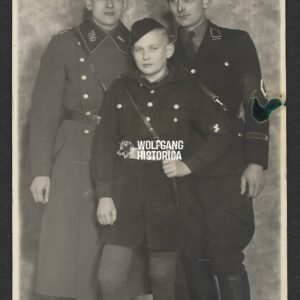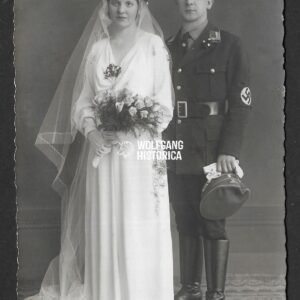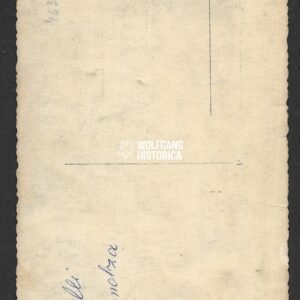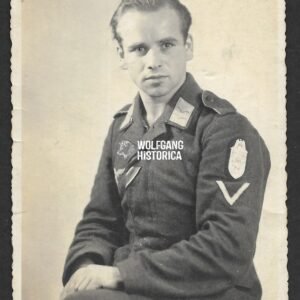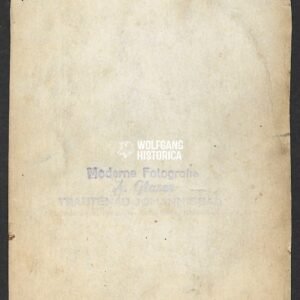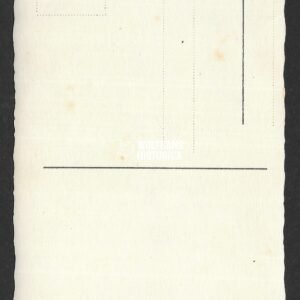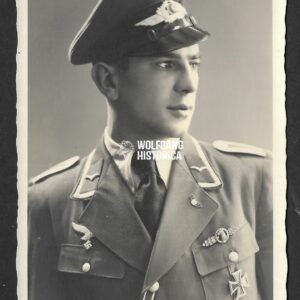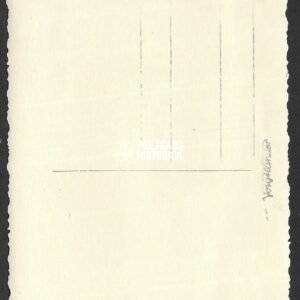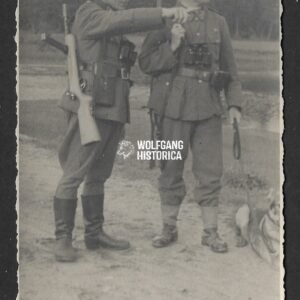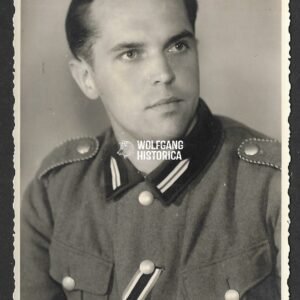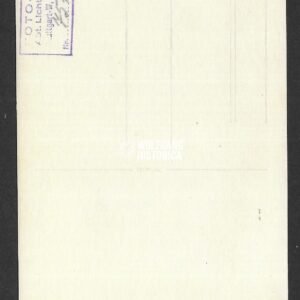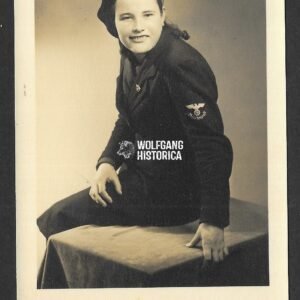Customers facing issues ordering, contact me
via info@wolfganghistorica.com or wolfganghistorica@gmail.com
NEW HOUTEN MILITARIA FAIR VIDEO ONLINE: Watch it here!
Planning a big signature update.. Stay tuned.
Schutzpolizei Tschako by Erel (Robert Lubstein, 1938)
€825,00Offered here is an original Schutzpolizei Tschako (Police Shako), in very good condition overall. This is a textbook example of the type worn by the municipal police forces (Schutzpolizei) during the Third Reich era.
-
The green velvet body remains clean and vibrant, with only a few minor (moth-related) nips near one of the side buttons.
-
The black leather portions are also well-preserved, showing only the expected signs of age and use — no major cracks or damage.
-
The interior is maker marked: Erel – Robert Lubstein, Berlin, a well-known and respected manufacturer.
-
Dated 1938 on the leather liner, which remains intact and supple.
-
Size marked 57, which is a desirable larger size for display or mannequin fitting.
-
Complete with its original national cockade (concorde).
A solid, complete piece with strong collector appeal. Condition as seen – please refer to the detailed photos.
Kriegsmarine Dagger with Portepee by Eickhorn
€0,01Original Kriegsmarine officer's dagger, complete with its original portepee, manufactured by the renowned firm Eickhorn of Solingen. This classic naval dagger is a fine example of Third Reich period craftsmanship and remains in overall nice condition.
The blade is bright and clean with only light wear, featuring the iconic Eickhorn maker's mark, and retains its full etched fouled anchor motif on both sides. The gilded brass fittings show a warm, even patina consistent with age, while the celluloid grip is intact and free of cracks. The portepee is original to the piece and still tied in the correct naval knot style, showing some honest wear but complete.
The scabbard retains good detail with minor handling wear, displaying a nicely toned finish.
Sold to people over 18+ with proof of identity!
Reichsarbeitsdienst Ring
€185,00Westwall 1939/40 Ring
€165,002x Photographs Waffen-SS NCO wearing Galicia (?) Arm Shield
€50,005x Photographs of the Allgemeine-SS
€80,003x Photographs of Waffen-SS Soldier/Officer – “Das Reich” Cufftitle
€75,00Studioportrait of Waffen-SS Soldier
€50,00Studioportrait of Waffen-SS Soldier
€55,00Waffen-SS Officer riding a horse equipped with MP35!
€100,00Studioportrait of Waffen-SS Soldier
€40,00Exceptional Fallschirmjäger Photo Grouping – Kreta 1941 (63 Photos + Postcard + Death Card)
€0,01Outstanding and historically significant grouping of 63 original wartime photographs, 1 postcard, and 1 death card, all related to a Fallschirmjäger (German paratrooper) who fought during the legendary Battle of Crete (Kreta), 1941.
This rare set offers an authentic and personal glimpse into the life and service of a German paratrooper, including:
-
Striking images of Fallschirmjäger in full gear
-
Action shots over Greece and on the ground in Crete
- A unique photo of a paratrooper holding a sniper rifle – a standout highlight! (See the photo with the PAK)
-
Candid moments of daily life, movement, and operations on the island
Also included is a death card for a soldier from Fallschirm-Sanitäts-Abteilung, D XI. Fliegerkorps, who was killed west of Heraklion – a powerful and somber connection to the brutal combat experienced on Crete. Whether this soldier was part of the same unit or a close comrade remains unclear, but the inclusion adds valuable historical depth.
A visually rich and emotionally resonant grouping—ideal for collectors of Fallschirmjäger, airborne operations, or Battle of Crete memorabilia. Groupings of this size and content are becoming increasingly scarce.
André Bayle – 33. Waffen-Grenadier-Division der SS “Charlemagne” (French Volunteer)
€65,00Hanns-Heinrich Lohmann – “Norge” & “De Ruyter” (Eichenlaub)
€85,00Hans Baur – Personal Pilot of Adolf Hitler
€75,00Werner Damsch – SS-Panzer-Grenadier-Regiment 25 “Hitlerjugend”
€45,00Original Postwar Signature on a Postwar Photo of Werner Damsch. SS-Hauptsturmführer Werner Damsch (22.07.1918 † 07.11.1994) earned the Ritterkreuz on April 17, 1945 as SS-Hauptsturmführer und Kommandeur of the I. Bataillon/ SS-Panzer-Grenadier-Regiment 25 of the 12. SS-Panzer-Division “Hitlerjugend”. Postcardsize. Condition as seen.
Ritterkreuz: Distinguishing himself as a Bataillon commander during the Battle of the Bulge. He achieved particularly notable success on the 03.01.1945. On this day he led a Kampfgruppe composed of the remnants of the I. and II./SS-Panzergrenadier-Regiment 25. With help from the divisional Panzer-Regiment he succeeded in capturing the village of Mageret and Hill 510, the latter being located just to the west of the village. He was later wounded on the same day at 19:00 by an artillery strike that badly injured both of his legs.Johann Fiedler – SS-Panzer-Grenadier-Regiment 6 “Theodor Eicke”
€75,00Waffen-SS Photo Grouping – 1. SS-Infanterie-Brigade – 72 Photos + 1942 Christmas Card
€650,00Authentic WWII-era photo collection featuring 72 original photographs along with a rare commemorative card titled "Zur Erinnerung an Kriegsweihnachten 1942 vor Leningrad" ("In Memory of War Christmas 1942 near Leningrad").
The photos most likely depict men of the 1. SS-Infanterie-Brigade, identified by the unit insignia visible on a vehicle wheel cap in one of the images. The 1. SS-Infanterie-Brigade was formed from concentration camp guards and early SS volunteers, and served primarily on the Eastern Front in rear-security and anti-partisan operations.
Highlights of the collection include:
-
Camouflage uniforms in use
-
Portraits of officers and enlisted men
-
Photographs of Vehicles
-
Candid and formal group shots
Many photos feature handwritten names on the reverse, offering excellent research potential for collectors and historians alike offering insight into a little-documented SS formation..
Condition as seen in the photos.
German Press Photo: SS-Gruppenführer Sepp Dietrich
€250,00Oakleaves Holder Ernst Ziemer with Adolf Hitler
€65,00Original German Press Photo: of Oakleaves Holder Martin Grase with Adolf Hitler
€75,00German Press Photo: Oakleaves Holder Walter Krüger with Adolf Hitler
€75,00Eisernes Kreuz 2. Klasse (Unmarked)
€110,00Eisernes Kreuz 2. Klasse (Unmarked “24” – Date engraved)
€120,00Eisernes Kreuz 2. Klasse (Unmarked Julius Maurer)
€120,00Sudetenland Medal – Medaille zur Erinnerung an den 1. Oktober 1938
€40,00Sudetenland Medal – Medaille zur Erinnerung an den 1. Oktober 1938
€40,00WH Heer Panzerjäger-Abteilung 38 Summer Tunic
€1.250,00DRK Probeschwester Brooch (Numbered & Karlsruhe)
€150,00KIA Soldbuch & Erkennungsmarke (KIA April 1945 in Germany)
€0,01Original Soldbuch and Erkennungsmarke (ID tag) belonging to Schütze Alfred Somberg, who was Killed in Action on April 2, 1945, during the final weeks of the war and is buried at Gelsenkirchen-Buer-Hauptfriedhof.
Alfred Somberg served in various rear-area and fortress defense units, typically composed of older or second-line troops, tasked with guarding prisoners, securing occupied areas, and later in the war, defending against advancing Allied forces:
-
Landesschützen-Ersatz-Bataillon 6
-
Landesschützen-Bataillon D
-
Festungs-Bataillon 1427
-
Ersatz-Bataillon (O) 286
The Soldbuch is complete with photo and well-preserved, showing clear service entries and stamps. The ID tag is fully legible and matches the info in the soldbuch. Condition as seen.
1935 Meissen 225th Anniversary Böttger Stoneware Medallion
€55,00Original commemorative medallion issued in 1935 to celebrate the 225th anniversary of the founding of the Staatliche Porzellan-Manufaktur Meissen, the world-renowned German porcelain manufacturer established in 1710. Crafted in Böttgersteinzeug (Böttger stoneware), this elegant red-brown medallion honors Johann Friedrich Böttger, the alchemist credited with discovering the first European hard-paste porcelain.
Obverse:
-
Classical profile of Böttger in high relief, encircled by a laurel wreath and the inscription:
"JOHANN FRIEDRICH BÖTTGER"
Reverse:
-
Commemorative text: “Staatliche Porzellan-Manufaktur Meissen – 225 Jahre – 1710–1935”
-
Features Meissen's iconic crossed swords mark, AR monogram, and a crown symbol.
-
Includes a swastika and date “1935,” reflecting the political era of production.
This piece is a unique blend of artistic, historical, and political significance, representing a key milestone in European ceramics and the legacy of Meissen craftsmanship. An excellent addition for collectors of Meissen porcelain, Third Reich memorabilia, or ceramic art history.
Top German WWI & WWII Medal Bar – 6x Ordenspange with 25-Year Wehrmacht Service Cross!
€0,01-
Iron Cross 2nd Class 1914
-
Awarded in the German Empire during World War I.
-
The cross bears the “W” for Kaiser Wilhelm and the year 1914.
-
-
Merit Cross for War Aid (Kriegs-Hilfsdienstkreuz)
-
Issued during World War I to civilians and military personnel who contributed to the war effort.
-
-
War Merit Cross 2nd Class with Swords
-
Awarded for merit under wartime conditions, but not necessarily for direct combat.
-
-
Honor Cross of the World War 1914–1918 (Hindenburg Cross)
-
Awarded to World War I veterans by the Third Reich in the 1930s.
-
-
Wehrmacht Service Award for 25 Years
-
Awarded to Wehrmacht personnel for 25 years of military service.
-
-
Wehrmacht Service Award for 12 Years
-
Awarded to Wehrmacht personnel for 12 years of military service.
-
These medals are mounted together as a "medal bar" (Ordenspange), commonly worn on uniforms for formal occasions. This particular set likely belonged to a veteran who served in both World Wars and had a long military or public service career.
Condition as seen!
Feuerwehr-Ehrenzeichen II. Stufe – “60” Katz & Deyle
€0,01“Olympische Spiele Berlin MCMXXXVI” Coin in Etui
€150,00Postcard Dr. Alfred Meyer – Gauleiter von Westfalen-Nord – WHW 1933/34
€30,00NSB-Leader Anton Mussert before his execution
€75,00Heim ins Reich Badge – (C.W.)
€235,00Studioportait of HJ, Allgemeine-SS and SA member
€75,00Erinnerung an den 13. März 1938 Anschluss Österreich in Etui
€150,00Studioportrait of young Waffen-SS Soldier (Crystal Sharp Quality!)
€75,00Studioportrait of Waffen-SS NCO with awards
€55,00Wedding Portrait of a NSDAP Blockleiter (Early)
€35,00Studioportrait of Luftwaffe soldier wearing the Narvik shield!
€95,00Studioportrait of Fallschirmjäger Officer wearing awards, dagger and Kreta Cufftitle!
€95,00Studioportrait of Luftwaffe Aufklärer with Awards & Unit/Unknown Pin on his collar!
€80,00Photograph of Zollgrenzschutz Soldiers – MP35 (?)
€20,00Studioportrait of Reichsarbeidsdienst member showcasing his KVK2X!
€35,00Studioportrait of young girl with the Reichspost
€35,00Product Status
All Categories
- Collaboration
- Combat Awards
- Documents
- Dutch Collaboration
- Erkennungsmarke
- Finnish Militaria
- Flemish Collaboration
- General Awards
- Iron Cross
- Japanese Militaria
- Other Nations
- Photos
- Porcelain & Cutlery
- Portraits
- Stickpins & Tinnies
- Storing & Archiving
- Uniforms
- Wartime Signed
- Wound Badges
- Archive (Sold)
- Awards & Decorations
- Uniforms & Insignia
- Papers & Documents
- Award Documents
- Death Cards
- Military & Civil ID's
- Postcards & Feldpost
- Literatur
- Photos & Postcards
- Signatures
- Kriegsmarine
- Luftwaffe & FJ
- Panzer
- Waffen-SS
- Wehrmacht
Brands
- Adolf Baumeister (Lüdenscheid)(1)
- Arbeitsgemeinschaft der Graveur-, Gold- und Silberschemiedeinnungen (Hanau)(1)
- Arbeitsgemeinschaft Metall und Kunststoff (Gablonz an der Neiße)(1)
- Arno Wallpach (Salzburg)(2)
- Berg & Nolte (Lüdenscheid)(3)
- Biedermann & Co (Oberkassel)(1)
- C.E. Juncker (Berlin)(5)
- Carl Poellath (Schrobenhausen)(1)
- Carl Wild (München)(2)
- Deschler & Sohn (München)(1)
- Ernst L. Müller (Pforzheim)(1)
- Förster & Barth (Pforzheim)(2)
- Franz Reischauer (Oberstein)(1)
- Friedrich Linden (Lüdenscheid)(2)
- Friedrich Orth (Wien)(1)
- Fritz Zimmermann (Stuttgart)(1)
- Funke & Brünninghaus (Lüdenscheid)(1)
- Grossmann & Co (Wien)(1)
- Hauptmünzamt Wien (Wien)(2)
- Hermann Aurich (Dresden)(1)
- Hermann Wernstein (Jena-Lobstedt)(1)
- Julius Bauer & Söhne (Zella Mehlis)(1)
- Julius Maurer (Oberstein)(2)
- Karl Wurster K.G. (Markneukirchen)(1)
- Katz & Deyhle (Pforzheim)(1)
- Klein & Quenzer (Idar Oberstein)(3)
- L. Christian Lauer, Nürnberg (Nürnberg-Berlin)(1)
- Overhoff & Cie (Lüdenscheid)(1)
- Paul Meybauer (Berlin)(2)
- Richard Sieper & Söhne (Lüdenscheid)(1)
- Rudolf A. Karneth & Söhne (Gablonz a.N.)(1)
- Rudolf Souval(2)
- Rudolf Wächtler & Lange (Mittweida)(4)
- Wächtler & Lange (Mittweida)(1)
- Walter & Henlein (Gablonz)(1)
- Werner Redo (Saarlautern)(1)
- Wernstein (Jena)(3)
- Wilhelm Deumer (Lüdenscheid)(6)
- Wilhelm Hobacher (Wien)(1)

